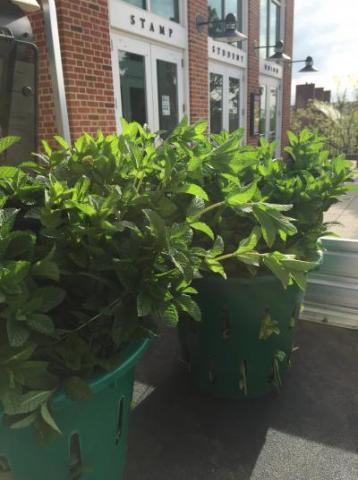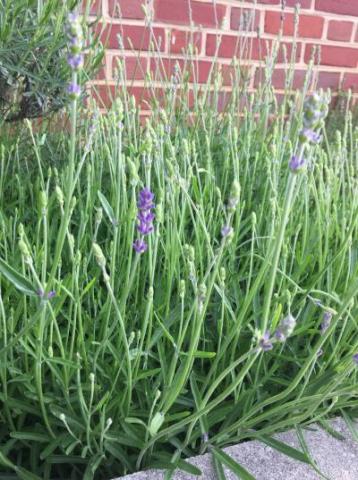The Chef's Garden

The Chef’s Garden, located in front of the Stamp Student Union, offers fresh and local herbs that can be used by our campus chefs and Campus Pantry participants. Over the years, the Chef’s Garden has gone through changes dealing with the microenvironment created by the exposed brick and the best use for the products, but it has always been able to grow through the help of several partners on campus including Dining Services, the Stamp staff, Building & Landscape Services, and the Institute of Applied Agriculture. In 2013, the Chef’s Garden started in order to provide the Executive Chef in the Catering Services with local produce that he wanted and needed. The first change that Chef’s Garden implemented was to begin providing produce for Adele’s at Stamp, now no longer in service, in addition to Catering Services.
The next change occurred when Chef’s Garden partnered with the GoEco Team, which is a group of students from the English Department working to gain more knowledge and experience outside of the classroom. The GoEco Team along with Chef’s Garden interns helped with planting the produce at the garden during one of the planting seasons. Along with growing produce to be used by chefs on campus, the Chef’s Garden was also able to connect with the Campus Pantry, providing them with fresh herbs.
The Chef’s Garden has made improvements to better the garden and provide produce with consistent quality. After each season, staff examine how well each plant did and make decisions based on what they should continue to grow, what should be removed, and what could be added based on the end results of the past seasons. The Chef’s Garden used to have about twenty or more different plants, but through observations at the end of each season, the number of plants grown was able to be narrowed down to eight herbs. The herbs that you could find at the Garden include sage, oregano, mint, rosemary, parsley, lavender, thyme, and cilantro.
 The Chef’s Garden is also hoping to offer more of an educational component where students can learn more about the Garden and the plants grown. This would be done by having signs in the garden that would provide information on what herbs are grown, the attributes of each plants, the plant family, historical facts, and what the herbs are used for, as well as recipes provided to Campus Pantry participants.
The Chef’s Garden is also hoping to offer more of an educational component where students can learn more about the Garden and the plants grown. This would be done by having signs in the garden that would provide information on what herbs are grown, the attributes of each plants, the plant family, historical facts, and what the herbs are used for, as well as recipes provided to Campus Pantry participants.
